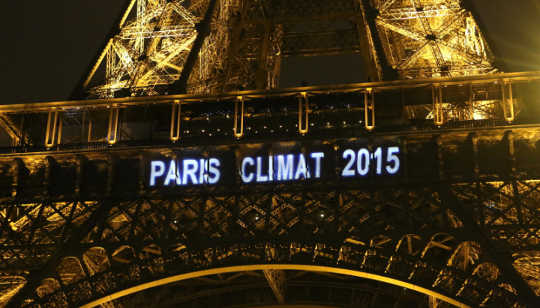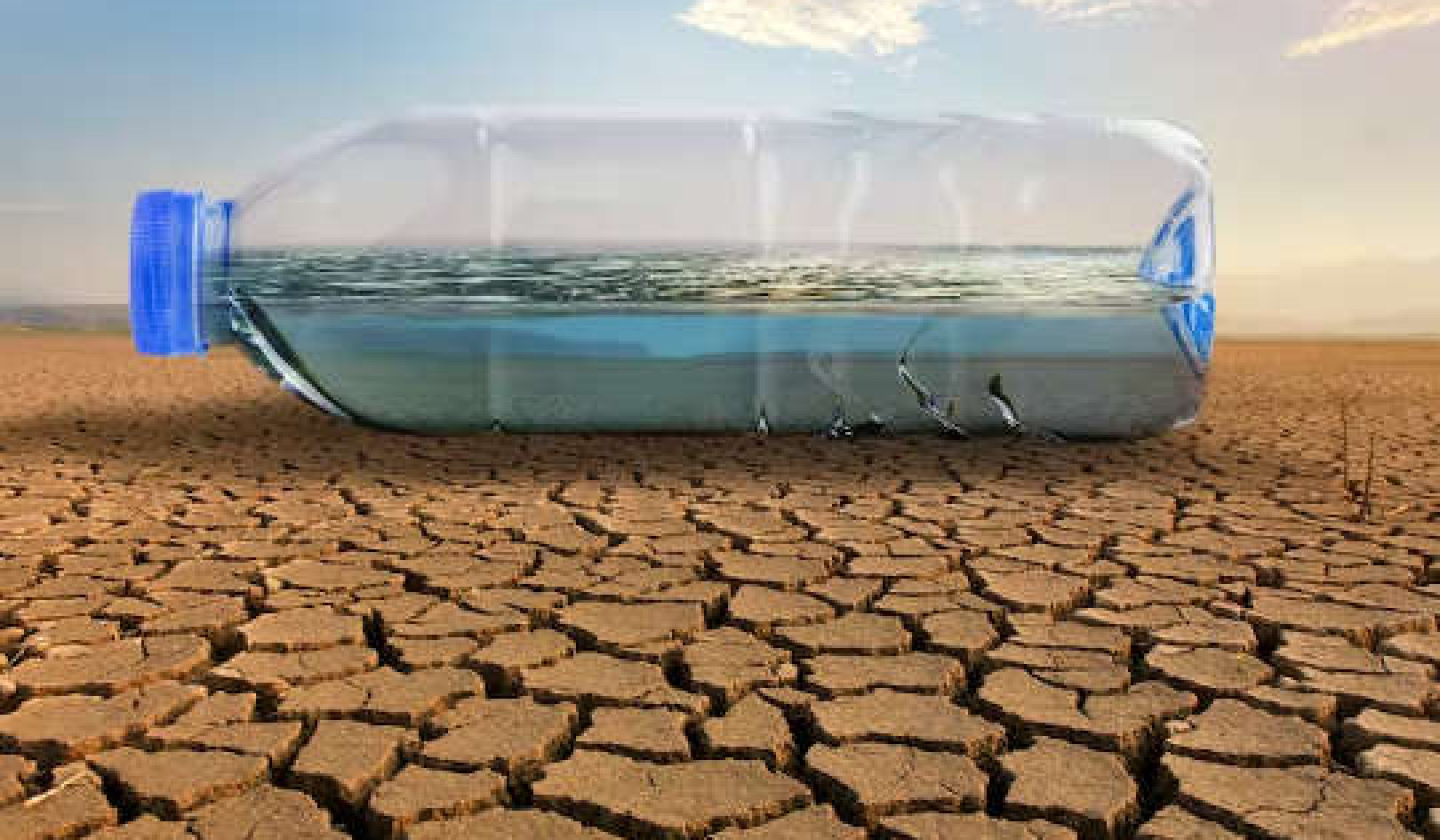
巴黎气候协议 saw countries pledge to limit global warming to well below 2?, and to aim to keep it within 1.5?. The problem is that countries' current emissions targets are not enough to meet these goals.
在一个 今天发表在“自然”杂志上, I and my colleagues from Austria, Brazil, China, South Africa, Germany, the Netherlands and Switzerland take a closer look at those pledges, and the studies that have so far evaluated them. The bottom line is that under the existing Paris pledges the world would be facing 2.3-3.5? of warming by 2100.
承诺,被称为 国家自主贡献 或“国家自主贡献”将导致排放14数十亿吨,高于2030应该以最便宜的途径限制变暖。
While this path is well below the “business as usual” scenario, it is not yet in the range of the 1.5-2? objectives we have set ourselves. So it’s a first step, but bigger steps are needed.
我们在2030之前所做的努力越少,之后的减排就越困难。 不过,我和我的同事发现,有几种方法可以缩小差距。
为什么目标在 2030 年后变得更加困难?
To limit global warming to any level, we ultimately have to completely stop CO? emissions and ramp down other greenhouse gas emissions. For any given warming threshold, we have to limit total emissions to a certain amount, known as the “carbon budget”.
It is likely that to keep warming well below 2? we have a remaining carbon budget of between 750 billion and 1.2 trillion tonnes. For context, global emissions in 2010 were around 50 billion tonnes.
Remaining on the current path, as laid out by the INDCs, would mean the world would have to make very drastic cuts in emissions after 2030 to keep warming below 2? (and would likely make the 1.5? limit completely unachievable).
这个大幅度的削减将意味着大量的搁浅投资,因为排放量将持续上升到2030,这意味着对基础设施的持续投资将无法实现我们的长期目标。 对于“过渡”燃料(如天然气)的投资也是如此。 如果目前的投资不能成为接近零排放的2050世界的一部分,那么他们可能不得不在通常的使用日期之前退休。
如果在2030中突然意识到我们必须做更多的事,世界将不得不每年减少3-4%。 像澳大利亚这样的国家每年都要削减10%。 这就像慢慢地走到悬崖边,然后跳下去。
This is not the cheapest way to keep warming below 2?. The least-cost option is to start investing now in the right technology. The 国际能源署认为 如果我们要在2050中实现零碳经济,或者至少要有一个接近于零碳的经济,那么我们今天就需要进行零排放投资,因为需要很长时间来翻转现有的投资股票。
The other problem is carbon capture and storage (CCS). The Paris Agreement pledges net zero greenhouse gas emissions after 2050. There is no pathway to this that doesn’t involve “net-negative” emissions, because there will still be some greenhouse gas emissions we can’t reduce, and we will have already overshot the carbon budget for keeping warming below 2?, let alone 1.5?. So we are going to have to come up with a way to pull CO? from the atmosphere.
How can we do that? The main option is thought to be bio-energy with carbon capture and storage (BECCS). This process involves growing biomass fuel, such as trees, then using the woodchips to produce electricity, then capturing the CO? produced, and finally sequestering and storing it underground.
过去,CCS主要与化石燃料结合在一起。 但风能和太阳能成本的大幅下降将使电力部门的脱碳更容易。
CCS would also likely require a carbon price, to incentivise the necessary investment in CCS by 2030. Retrofitting existing fossil fuel power plants with CCS or keeping coal demand high by supporting new coal power plants with CCS in India and China is hence likely an uphill battle that is lost on economic grounds. However, we would still need CCS and specifically BECCS to remove CO? from the atmosphere.
那么我们该如何缩小差距?
我们的研究发现了几种在2030之前进一步减少排放的方法。
首先是通过使用“巴黎协定”中的审查机制来推动“国家自主贡献”。 许多人认为这是协议中最重要的一个因素,可以看到“国家自主贡献”每五年修改一次。 当然,这些增长必须以国内政策为基础。
一些国家将超越其“国家自主贡献”。 例如,中国已承诺将2030的排放量提高至最高水平,但在2020之前,由于担心清洁空气,似乎已经实施了国内政策。
其他国家承诺的排放水平如此之高,以至于不得不花费大量的资金将排放量提高到这些水平。 土耳其,乌克兰,俄罗斯就是例子。 预计排放量可能达到10亿吨,因此我们永远无法看到。 幸好。
“国家自主贡献”也可以扩大到其他温室气体(一些国家不包括在内),如中国的一氧化二氮和甲烷。
国际航运和航空也可以发挥巨大的作用。 由于生产可持续的碳中性喷气燃料的困难,航空是最难解决的问题之一。 所以,尽管近期的减排方案并没有许多人想象的那么大,但这些高价值的行业非常重要,因为它们可以帮助筹集资金在其他地方采取缓解行动。
例如,该 国际民用航空组织的承诺 在2020需要大量补偿之后,无碳增长。 这可能会引发很多行动,并将资金转移到其他部门。
但是,航空和海运都需要整个框架的一部分 - 而且“巴黎协定”提到了其艺术上的全部排放量。 4.1,它们已经包含在一定程度了。
我们在商业部门以及地区和市政部门发现了其他的举措,1每年可以减少2030十亿吨的排放量。 然而, 更近的研究 如果所有这些太阳能,风能,林业和沼气领域的新举措得到落实,这个数字可能会高达每年十亿吨。
例如,欧洲的 太阳的 和 风 如果双方都实施这些举措,则可以将40%的1990%的目标提高到2030的60%XNUMX%以下。
和美国' Sunshot 和 风 计划可能会超出目前的排放目标,从26-28%低于2005的水平到60%的惊人。
These initiatives would put us well on the path to keeping warming below 2?. Now we just have to get serious about it.
在澳大利亚,我们既没有雄心勃勃的2020或2030目标,也没有达到目标的政策。 目前的排放量可能会超过5的-2020%目标(尽管 会计选项使用以前银行信用 将有可能使澳大利亚遵守“京都议定书”的目标)。
有好的迹象 - 如 国家可再生能源目标,现在加起来超过了国家的目标。 澳大利亚在零碳世界中有着巨大的机遇:没有哪个发达国家如此幸运地拥有太阳能和风能资源。
如果澳大利亚正确地打牌,它可能成为零碳世界的能源超级大国。 但是还有一段路要走。
关于作者
![]() 墨尔本大学地球科学学院Malte Meinshausen博士
墨尔本大学地球科学学院Malte Meinshausen博士
相关书籍
at at at

感谢造访 InnerSelf.com, 哪里有 20,000+ 宣传“新态度和新可能性”的改变生活的文章。 所有文章均翻译为 30多种语言. 订阅 每周出版的《内在自我》杂志和玛丽·T·拉塞尔的《每日灵感》。 InnerSelf杂志 自 1985 年起出版。

感谢造访 InnerSelf.com, 哪里有 20,000+ 宣传“新态度和新可能性”的改变生活的文章。 所有文章均翻译为 30多种语言. 订阅 每周出版的《内在自我》杂志和玛丽·T·拉塞尔的《每日灵感》。 InnerSelf杂志 自 1985 年起出版。






















